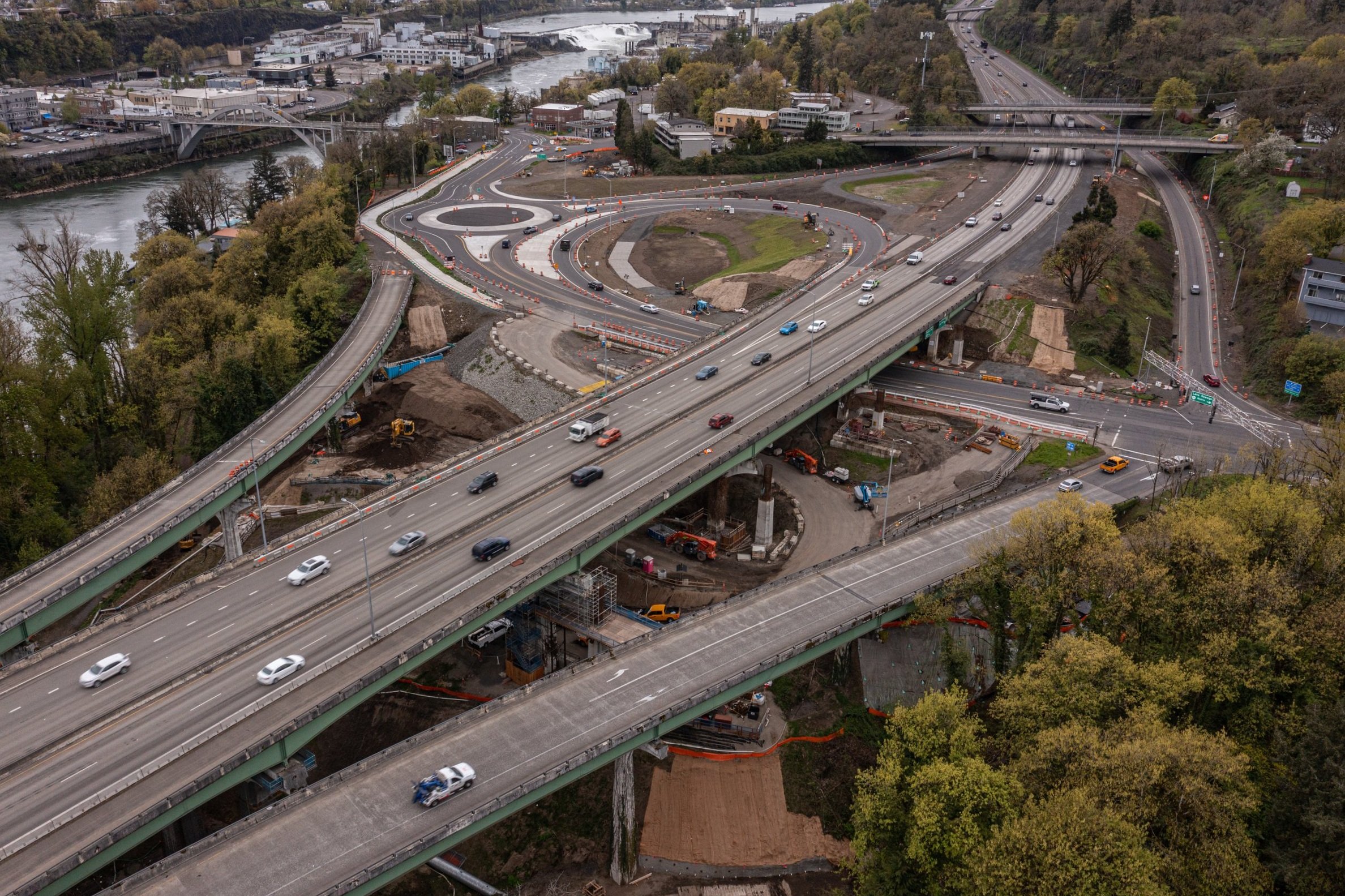
News items
Highlighting Abernethy Bridge Construction Seismic Resiliency Benefits During National Preparedness Month
September is National Preparedness Month, which is the perfect time to spotlight the seismic resilience benefits of the Abernethy Bridge construction project.
September is National Preparedness Month, which is the perfect time to spotlight the seismic resilience benefits of the Abernethy Bridge construction project. Once complete, the bridge will be the first earthquake-ready highway structure across the Willamette River in the Portland metropolitan region.
Aerial photo of the Abernethy Bridge
Earthquake Preparedness
Oregon has the potential for a 9.0+ magnitude earthquake caused by the Cascadia Subduction Zone. Preparing for this significant event will protect lives, infrastructure, and communities from catastrophic impacts. By investing in robust building practices, comprehensive emergency plans, and resilient infrastructure, we can significantly reduce the loss of life, minimize damage, and accelerate recovery efforts. Without these measures, the impact of such a colossal earthquake could be overwhelming, disrupting daily life and leaving communities struggling to rebuild.
Engineering for Earthquake Safety
The Abernethy Bridge construction project involves a comprehensive upgrade to the bridge, incorporating state-of-the-art seismic design principles developed from over 40 years of global research and testing. This project represents a significant leap forward in how we approach earthquake preparedness and safety. This landmark project will not only improve safety but also play a crucial role in emergency response and economic recovery by ensuring the bridge remains functional and reliable in the aftermath of an earthquake.
Replacing and Strengthening Columns: Strength and Innovation
Nearly half of the existing 43 columns are being replaced. The columns being replaced sit on foundations that can’t be updated and are at risk of collapsing during an earthquake. Replacing these columns will help keep the bridge stable. This is crucial because the soil may liquefy during a major earthquake, so we need to anchor these columns to stable bedrock or soil to ensure the bridge’s stability. These columns are distinguished by their increased amount of reinforcing steel and modern reinforcement details. In past earthquakes, column failures often occurred due to concrete crumbling and escaping between reinforcing bars. The new columns address this issue by incorporating increased reinforcement with more closely spaced bars, including some that are continuous. This design prevents unraveling or separation, reduces the risk of concrete escaping, and significantly enhances structural integrity. For the remaining columns, we’ll add extra steel or concrete to make them stronger. This helps protect the columns from damage and improves their ability to withstand earthquakes.
An additional significant upgrade is replacing the bridge’s bearings, which link the bridge deck to the support columns. The new bearings will let the bridge deck move separately from the columns during an earthquake. This helps the bridge handle the earthquake forces better and makes it more earthquake-resistant, effectively preventing common failures such as buckling or collapse.
Commitment to Safety and Preparedness
National Preparedness Month provides an opportunity to support efforts that enhance safety and resilience. It’s also a great time to review and update your own emergency plan, ensuring you and your family are ready for unexpected events. Click here for our guide for personal preparedness.
Click here to view ODOT’s seismic plan in the event of an earthquake.
